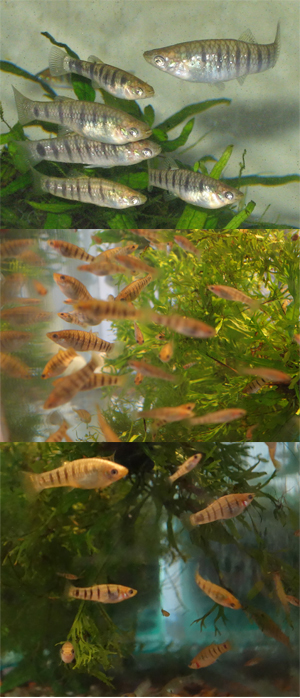|
|
||
|
|
Limia islai "Tiger" Lake Miragoane, Haiti |
|
|
|
||
 |
|
Common
Name- Tiger Limia Price: $10.00 each, 6 fry- $45.00 |
|

|
|
|
This fish has not yet been described. It was brought back from Lake Miragoane in Haiti about 2002 by Dominic Isla, initially misidentified as L.garnieri, then briefly thought to be a juvenile form of L. nigrofasciata. Later determined to be a new species, it has been found to be a genetically close relative of L. nigrofasciata. Not difficult to keep, it is an attractive fish where the number of bars differs from one fish to another, anywhere from 3 to 15. They will thrive and populate in a larger tank with some water movement, aeration and plants. Adding an algea supplement to their diet greatly increases their size and health. Though the population will increase if enough shelter is provided for the young, it is best to move gravid females to another tank, then raise the young separate from the adults until they are large enough to fend for themselves.
Similar to Limia nigrofasciata, this
species will sex out into males and females
Back to Previous Species To Next Species
Home
Contact Us
Receiving Shipped Fish
Keeping Select
Aquatics Fish |
|
|
|
|
|
|
||
|
|
Instead of using a Paypal link, |
|
|
|
||